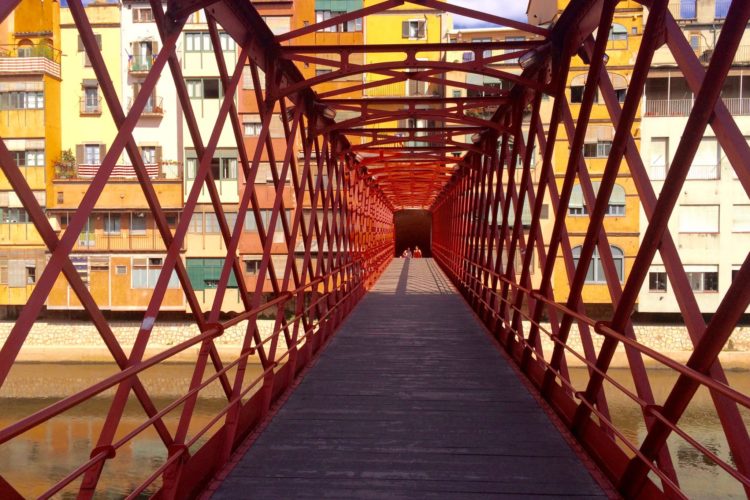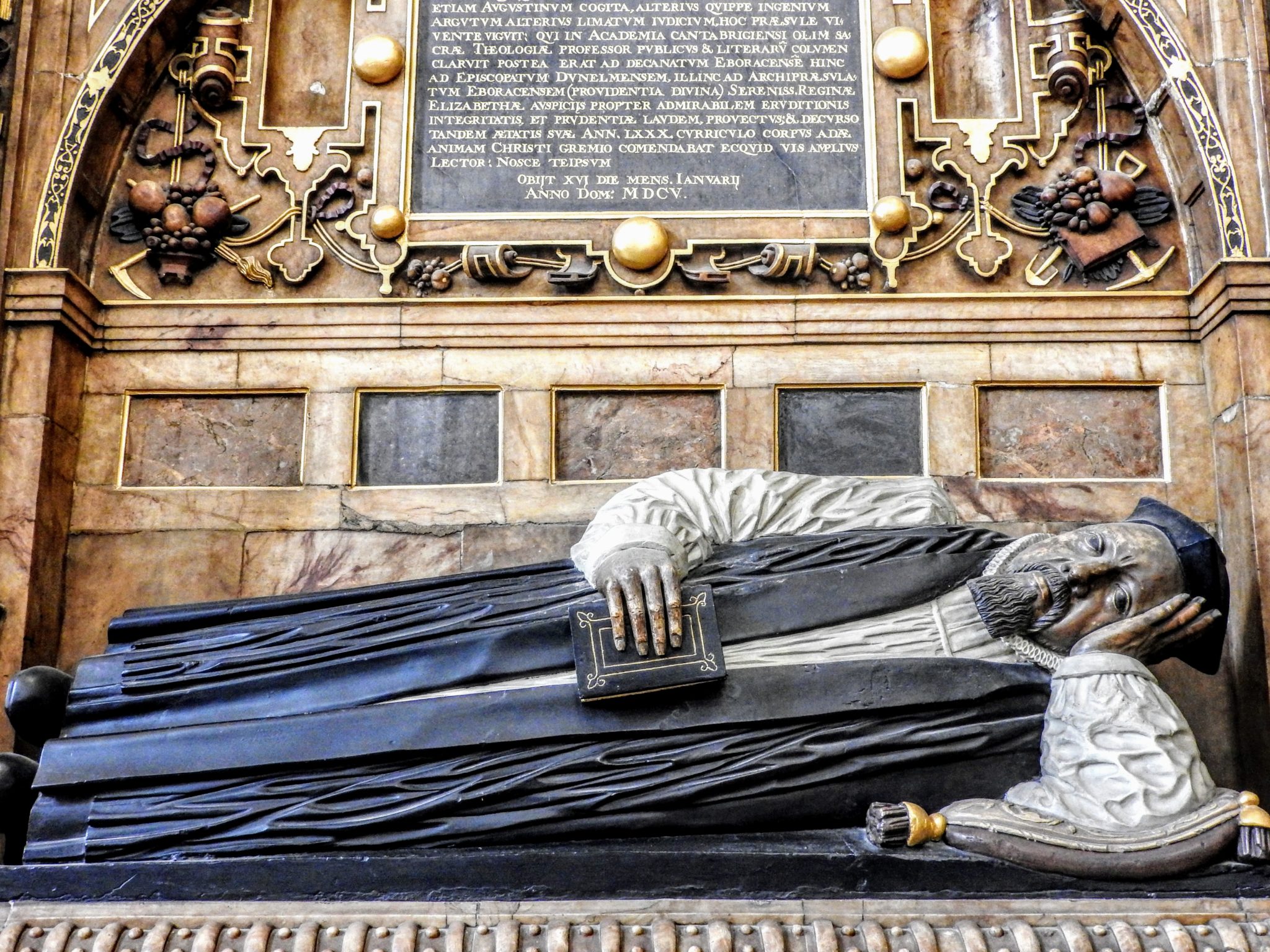I wanted to eat the air. I think that's a first for me.

“Wacky, Whimsical, Wonderful, Wednesday,” #2
Happy Wednesday, everybody! That glorious day on which rejoice that, “well, at least it’s not Monday or Tuesday.” To get us over the hump, I’ve posted another edition of “Wacky, Whimsical, Wonderful, Wednesday.” I hope you enjoy. Reading over my rather punchy prose, I get the feeling I am definitely ready for the weekend!
Wacky
Matthew Hutton (1529-1606) was the Archbishop of York between 1595 and 1606. This is his tomb effigy from York Minster, and it is surprisingly vivid and in good condition considering its age. But it is just me or does he look like he’s ready for a change? I don’t mean to sound irreverent (well, I do mean to, I just hope nobody is offended by my irreverence), but the look on his face just screams, “man, I’ve been reading the same book for five centuries. Can one of you tourists hook me up with an e-reader?”
Hutton hailed from the Lancashire village of Priest Hutton (does that mean his vocation was predestined? Wow, so many bad puns there…). For a time he held the Lady Margaret Professorship in Divinity at the University of Cambridge. This professorship was founded by Lady Margaret Beaufort in 1502–after she had retired from kingmaking and turned the bulk of her attention to philanthropy.
Hutton, whose tenure as archbishop spanned the last years of Elizabeth I’s reign and the first few of her successor James I’s, was a bit controversial. Some of his contemporaries accused him of having puritan leanings, or at least being “soft” on puritans. This wasn’t a great reputation for a professional churchman to have in the reigns of either monarch. Though both Elizabeth and James were personally religiously tolerant, both also came to embrace, for political reasons, harsher measures against Church of England dissenters. To some extent, Hutton may have been a victim of slander, but there is a letter in his own hand petitioning King James to relax the punitive laws against the puritans.
But Hutton is also known to have interceded on behalf of Jane Neville, Countess of Westmoreland, whose husband, the Earl of Westmoreland, was one of the ringleaders of the 1569 “Rising of the North.” The Rising was a Catholic rebellion, focused on overturning the Protestant innovations of the Tudor monarchs and, more broadly, rolling back the growing power of the Tudor bureaucratic state.
Without more information, I don’t think one can read much of anything into these positions. Hutton might have been opposed to state interference in the practice of religion. He might have had pity on a (wealthy and aristocratic) woman whose husband had forfeited their property though political activity. Or he may well have sympathized with the difficult position of those who rejected the new Anglican church and identified with people on the other far end of the spectrum. (After all, pretty much the only thing late Tudor and early Stuart-era puritans and Catholics had in common was a mutual disdain of the Church of England–which was trying to chart a moderate course in an era that had little use for religious moderation.) Or his actions may have been purely political and he was an accomplished fence-straddler.
That last might explain his effigy’s curious pose. Decades of fence-straddling are bound to get uncomfortable.
Whimsical
I don’t know about you, but I think historic sites should always have security lights, motion sensors, and cameras (some combination of which I presume this is) that can also double for cuddly bear-like figures who smoke sloppy homemade cigarettes.
This guy lives on the abbey stairs at Mont-Saint-Michel, and reminds me a little of “Tick-Tock” from Return to Oz, if Tick-Tock smoked, were made out of stone, and wore a little cap. A little while ago, I wrote about Mont-Saint-Michel’s “secret resident” exhibit, but, based on this photo, it seems that they have more than one. I am beginning to think that the islanders–or perhaps ghosts of the long-dispossessed monks?–really just want a locally-sourced mascot.
If that’s the case, I have to say I prefer this little fella to the scary-eyed eagle, with its sharp talons and screeching. This guy seems very friendly and happy to help. I can just hear him warning the tourists to mind the quicksand and incoming tide.
Wonder
This is the Pont de Ferro, or as it is more commonly known, the Pont Eiffel, in Girona, Catalonia. As you probably guessed from the name, it was designed by Gustave Eiffel and completed in between 1876 and 1877–about a decade before got to work on his more famous tower.
The bridge is one of four that crosses the Onyar River, connecting the medieval and modern parts of Girona. The red iron and latticework bridge may not Girona’s most beautiful site (which would be a very tall order), but it is definitely one of its most eye-catching.
If you do a quick internet search about the bridge, you’ll turn up a lot of site reviews and blog posts, many of which are very disparaging. Plus, I swear at some point I read something about how actual residents of Girona hated the bridge when it was completed and mocked it for years. But when I was visiting Girona about a year ago, my guide–a native of the city–was adamant that the bridge has always been as source of pride to residents. I suspect the whole truth lies somewhere in between, it usually does.
Personally, I love this bridge, but I can see how its design might have gone over badly with the same kind of late Victorian observers who were appalled by the Eiffel tower. But to me, it is different and eye-catching, but not so large or flashy that its essential strangeness sticks out like a sore thumb. In fact, the bridge melds seamlessly with everything around it. The red iron is in perfect harmony with the rich golds and oranges of the Onyar’s famous buildings, and something about it makes me think of a sun setting on the river.
What do you make of Girona’s Pont Eiffel? Love it? Hate it? Having vague Matrix flashbacks? Do you agree that Mont-Saint-Michel is hankering after a new mascot? And why is Matthew Hutton leaning that way on his effigy? He’s been there for 500 years. Could it be that his legs just fell asleep?







Comments (0)